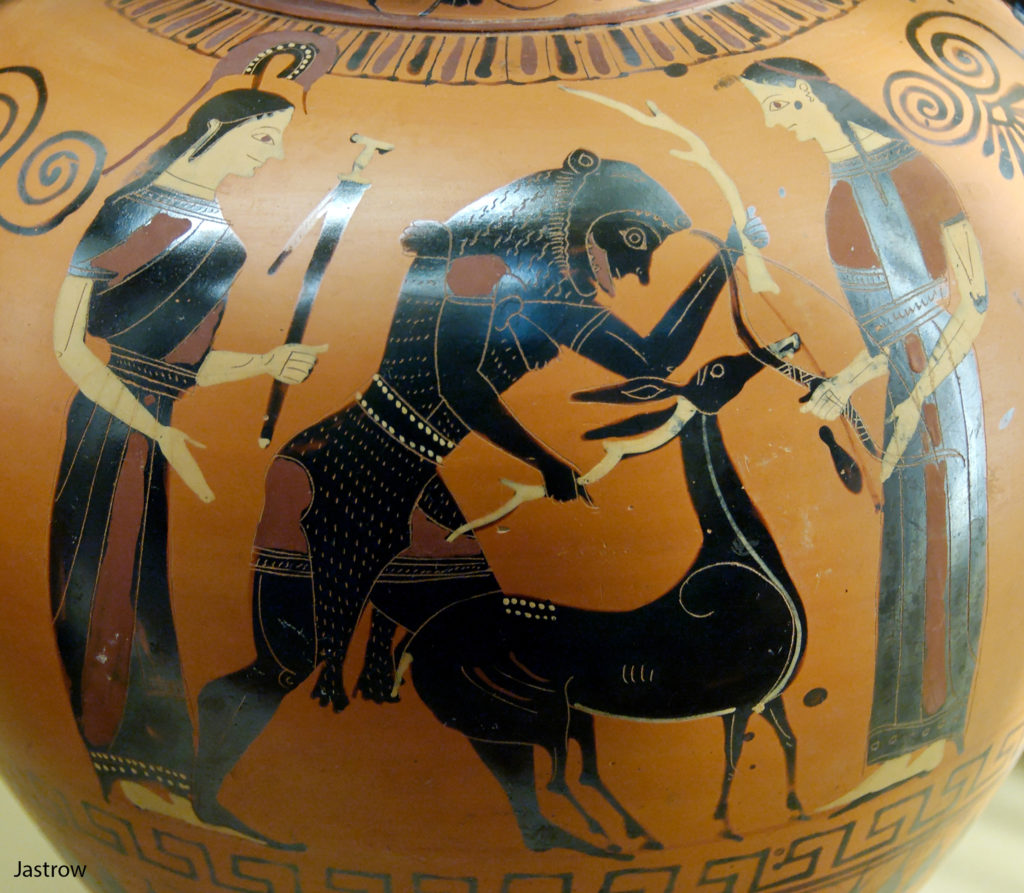
Here is another short excerpt from my forthcoming book about animal divination:
In antiquity the deer familiar of Artemis was a reindeer, which some confuse with a stag. Both horned and hornless does are depicted driving the goddess’s chariot. These does are magical and can run faster than an arrow. A fifth doe, called the Ceryneian Hind, was too fast even for Artemis to catch, but the doe was later given to her by one of the Pleiades sisters, Taygete. The third labor of Heracles (Hercules) involves capturing the Ceryneian Hind and bringing her alive to Mycenae, a city in the Argolis region of the Peloponnese. This quest, which takes exactly one year, begins at the temple of Artemis in Oenoe (the Oenoe located in Argolis). Though the journey begins and ends in about the same place, Heracles chases the Hind through the upper Balkan region and into Hyperborea, a vaguely defined place in the north. The indomitable Hind then leads Heracles south to the temple of Artemis atop Mount Artemisium, where she allows herself to be captured. This is a shaman’s journey, an initiation into the cult of Artemis. The giant Hind, with her gold antlers and brass hooves, may have been a statue in the temple with those features.
